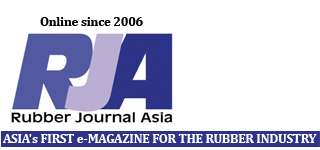As the prices of rubber in the global market is expected to rise, Sri Lanka is bustling to make strides of its rubber sector and keep up with the trend as well as to partake in the $4 Bn rubber exports target by 2022.
“I am pleased to announce that we are launching the first ever national rubber industry survey next month. We are also now looking at creating high end rubber testing lab facilities that the industry needs. All of this will contribute to Rubber Masterplan which looks to generate $ 4 Bn rubber exports by 2022” announced Rishad Bathiudeen, Minister of Industry and Commerce of Sri Lanka.
“This will be the first trade focused national rubber survey in the country and I thank you, the SLARPME for collaboration. Once the survey is completed we will create a database. The findings will then be fed to the comprehensive Rubber Labour force development survey that follows” Minister Bathiudeen said.
Additionally, he also said, “Apart from the Rubber Masterplan, my Ministry itself had already identified rubber as one of the thrust areas for development. Therefore the survey findings also will be used in Asian Development Bank’s CCED model.”
The Sri Lanka rubber industry was chosen as a pilot by the City Cluster Economic Model (CCED)of the Asian Development Bank and is expecting that the Phase III of the country’s rubber industry will end in December this year. With the CCED’s initiative, the ADB is also partnering with the Ministry of Plantation Industries.
“This survey and the Rubber Labour force development survey that follows next are the essential next step for our rubber industry which is the third largest export earner. We most welcome this initiative and praise the Ministry for preparing a comprehensive evaluation” SLARPME Vice Chairman Seneviratne said as he and other representatives praise Minister Bathiudeen and his ministry to the initiation of the comprehensive national Rubber Survey which is the first in Sri Lanka.
The first survey will be started on October and will survey the production, factories, number of employees and labour issues of the Sri Lanka rubber industry with the aim to cost cost of $ 22700 (Rs 3 Mn) only.
Seneviratne informed Minister Bathiudeen about their need for rubber quality testing laboratory facilities that are accredited to test the low and minor issues regarding the rubber that they export which thinks can greatly help in achieving the target of $4 Bn rubber exports by 2022.
As the world’s 7th largest natural rubber producing country, Sri Lanka offers many types and grades of rubber such as RSS, pale crepe, sole crepe, technically specified rubber and specialty rubber. Sri Lanka’s rubber products are exported to sophisticated markets such as Europe and USA and do not have any problem in adhering to international standards. In 2011 the total rubber production (raw rubber and value added) generated over $ 1.1 Billion in terms of revenue.
Sri Lanka is the 7th largest natural rubber manufacturing country in the world and offers various types and grades of rubber. The country is also known for sophisticated rubber products that are exported to USA and Europe which has generated revenue of over $1.1 billion.
Rubber coverage in Sri Lanka is about 125,000 Hectares of land and the annual production exceeds 153,000 tons. (PRA)

